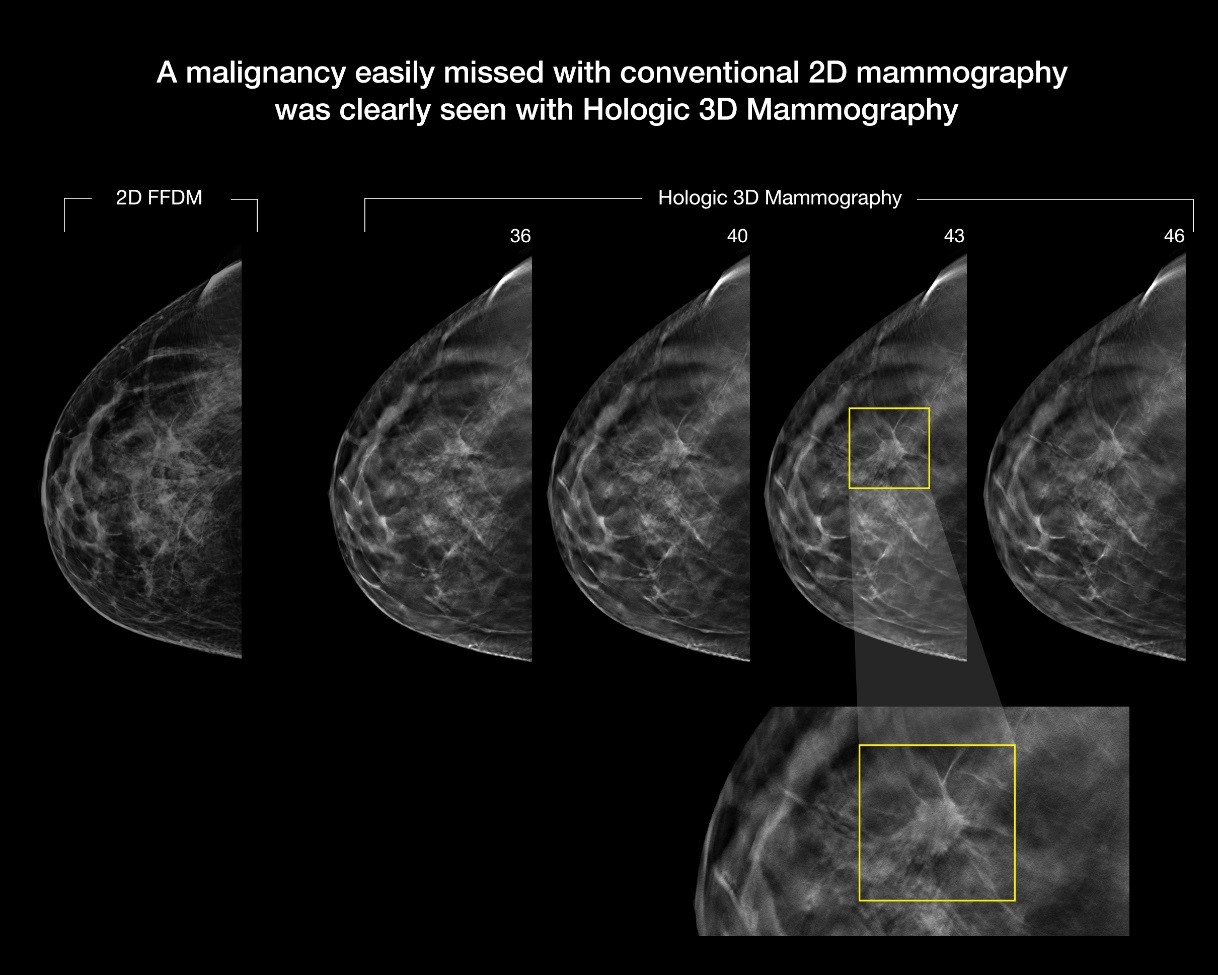Women today are receiving mixed messages about their mammograms. While most experts agree that women should start getting an annual mammogram by the age of 40, others say women can wait to begin screening until age 45 or even 50, and then only have them every two years. So, what should you do? Amanda Lord, MSOL, RT (R) (CT), manager, Diagnostic Imaging, Parkview Whiteley Hospital, tells us what women need to know about their risk and their options for testing.
Knowing your risk
First and foremost, it’s important that you have a discussion with your doctor about your family history and other important risk factors, including your breast density. Breast density is determined from a mammogram that is assessed by a radiologist. It is not related to the firmness of the breast and can’t be determined from a doctor’s exam. Breast density is broken down into four categories:

Studies have found that it is common for women in the U.S. to have high breast density and unfortunately, women with dense breasts have about a four to five times higher risk of breast cancer than women with low breast density. Besides age and weight, other factors related to high breast density include genetic and family history, menopausal hormone therapy use, and having fewer children. Right now, researchers don’t really understand why breast density increases risk.

3D Mammography: A new diagnostic tool
Doctors now have breakthrough technology at their disposal; 3D mammography technology provides a high resolution, multi-layered view of breast tissue that can detect breast cancer earlier, by an average of 15 months, and reduces the number of unnecessary callbacks by up to 40%.
While standard mammography is a good diagnostic tool, it has limitations in detecting cancers in women with dense breast tissue. 3D mammography allows physicians to examine breast tissue layer by layer. Unlike standard mammography that provides a flat 2D image of your breast tissue, 3D mammography provides fine details that are no longer hidden by the tissue above or below. This means that women with dense breast tissue will have a greater chance of having anything suspicious show.
Studies have shown that 3D mammography allows doctors to screen for breast cancer with much greater accuracy, regardless of a woman’s age or breast density. The exam itself is exactly the same as standard mammogram and takes just a few seconds longer to complete. The increased accuracy can offer women more peace of mind, knowing that they are giving themselves a greater chance in their fight against breast cancer.
3D mammography is available at Breast Diagnostic Center locations in Allen County and most recently at Parkview Warsaw in Kosciusko County. You can schedule your 3D mammogram, with or without a physician’s referral, by calling Parkview Health at (877) 225-5747.
Resources
Ho JM, Jafferjee N, Covarrubias GM, Ghesani M, Handler B. Dense breasts: a review of reporting legislation and available supplemental screening options. AJR Am J Roentgenol. 203(2):449-56, 2014.
Boyd NF, Guo H, Martin LJ, et al. Mammographic density and the risk and detection of breast cancer. N Engl J Med. 356(3):227-36, 2007.
Venkataraman S, Slanetz TJ. Breast imaging for cancer screening: Mammography and ultrasonography, in Up-to-date (Elmore JG, Sokol HN, eds.]. www.uptodate.com/contents/breast-imaging-for-cancer-screening-mammography-and-ultrasonography, 2015.
Friedewald SM, Rafferty EA, Rose SL, et al. “Breast cancer screening using tomosynthesis in combination with digital mammography. JAMA. 2014;3211(24);2499-2507.
Rafferty EA, Niklason LT. FFDM vs FFDM with tomosynthesis for women with radiographically dense breasts; an enriched retrospective reader study. Paper presented at: Annual Radiological Society of North American Scientific Assembly and Annual Meeting; November 2011; Chicago, IL.

.jpg)


